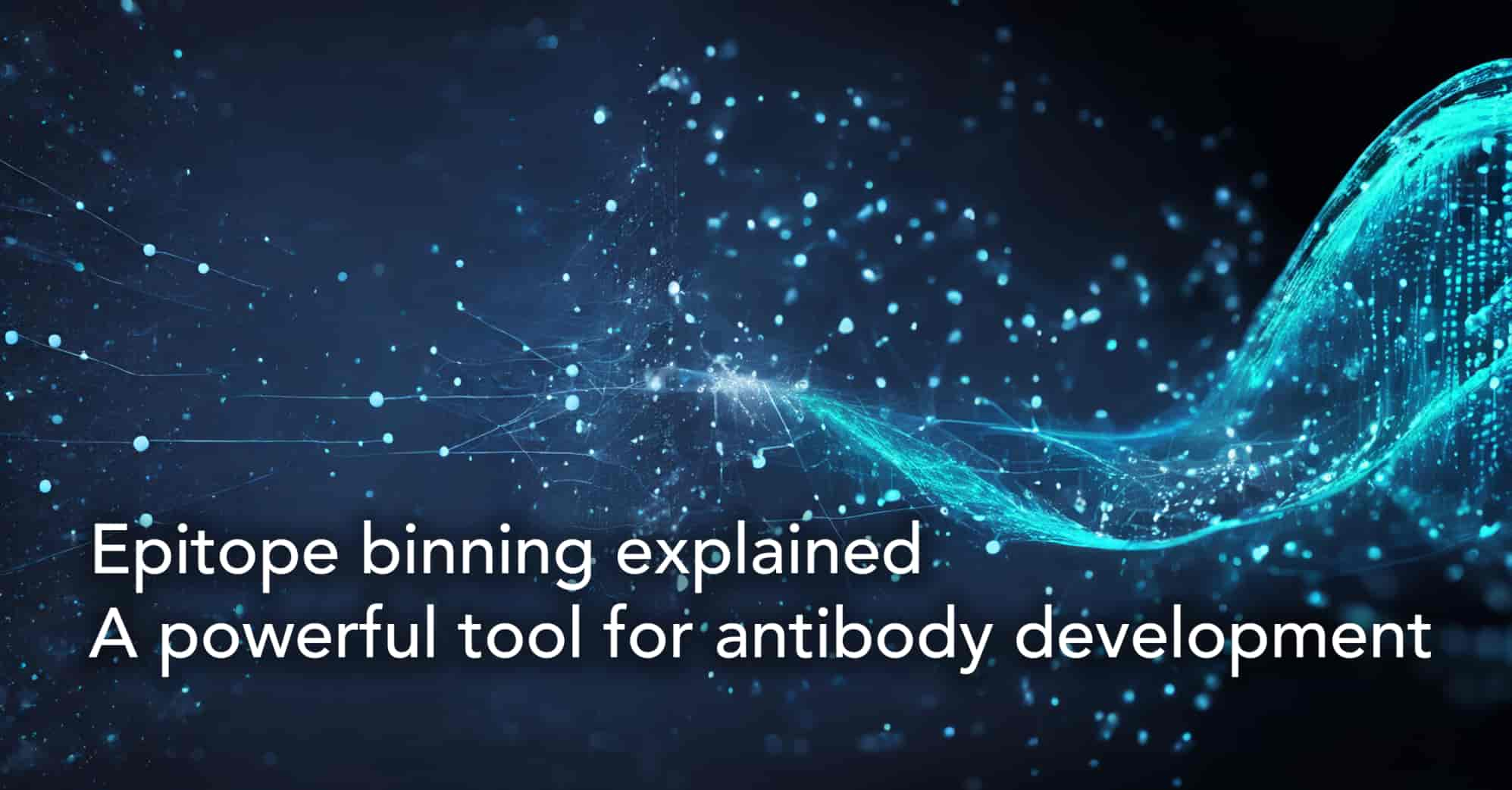Epitope binning explained: A powerful tool for antibody development

Epitope-based screening approaches are playing a pivotal role in the development of modern antibody therapies for various diseases, including cancer, autoimmune disorders, and infectious diseases. Since the approval of Orthoclone, the first epitope-targeted mAb, in 1986, over a 100 novel mAbs targeting specific epitopes have helped revolutionize treatment strategies and improve patient outcomes for a range of conditions including for cancer, autoimmune and infectious diseases.. Newer applications of machine learning and artificial intelligence (AI) are improving and increasing the efficiency of the antibody discovery process through the identification of common motifs and epitopes.
What is an epitope?
An epitope, or antigen determinant, is the specific part on the surface of an antigen that is recognized by and interacts with the variable regions of antibodies or the B- or T-cell receptor. In antibodies, the set of epitope-interacting amino acid residues is called the paratope. These residues are mainly found in the complementarity-determining regions (CDRs) of antibodies. The entire surface of an antigen typically comprises multiple overlapping domains that can be identified as distinct epitopes, binding to different paratopes. As the (type of) immune response is driven by specific epitope-paratope interactions, predicting antibody-antigen interaction is key to rational antibody design.
Epitopes can be classified into two main categories — linear and conformational. A linear epitope is a binding site on an antigen consisting of a sequential/continuous stretch of amino acids, whereas a conformational epitope is formed by protein folding which brings together discontinuous amino acids. Although linear epitopes can be recognized by both antibodies and T-cell receptors, conformational epitopes are generally only recognized by antibodies.
What is epitope binning?
Epitope binning is an antibody characterization technique that groups antibodies into distinct sets based on the different regions recognized on the target antigen.This is a critical step in antibody drug development since the binding epitopes determine the mechanism of action of therapeutic antibodies.
Having insights into the epitope landscape of antibody panels can significantly advance the development of multi-targeting approaches. Moreover, understanding which protein regions are targeted by your antibody panel can significantly enhance intellectual property (IP) security.
Why epitope binning in antibody development?
In the context of therapeutic antibody development, identifying and characterizing epitopes on target antigens is essential for designing highly specific and effective antibody-based therapies.
Epitope binning data can enable quick prioritization of the most promising candidates, as well as allow for more targeted optimization and advanced antibody engineering strategies. In addition, epitope binning data may provide insights into the mechanism of action and functional properties of the antibodies.
The capability of epitope binning to deliver a diverse panel of antibodies that target diverse epitopes can be particularly important in the development of antibody cocktails for therapeutic applications that require synergistic/enhanced breadth and potency.
Finally, the epitope is becoming a key part of drug patents and is being used to support patent novelty. In this context, epitope binning will be a vital tool for life sciences to focus on generating new IP based on novel epitopes and avoiding potential patent disputes.
Approaches to epitope binning
Label-free biosensor-based binning
Optical techniques like surface plasmon resonance (SPR) or biolayer interferometry (BLI) are nowadays the golden standard to perform epitope binding studies.
Antibodies are typically first immobilized on a sensor surface, followed by a target antigen complexation, after which a second antibody will be circulated over the surface. Absence of binding signal of the second antibody to the sensor indicates for competition between the tested antibodies and thus targeting a similar or overlapping epitope.
Even though experimental epitope binning methods have been evolving in terms of resolution and throughput, they are still limited by the size of the repertoire and infeasible for scaling up to large sets of interactions. As a result, the focus is now turning to computational epitope binning methods that enable the scalable in silico characterization of entire antigen-specific antibody repertoires.
Why in silico epitope binning?
Advances in next-generation sequencing have resulted in the exponential growth of antibody repertoire data that could easily challenge even the highest throughput experimental techniques currently available. As a result, in silico approaches to epitope binning will be central to scaling up the productivity and efficiency of antibody development.
The key benefits of in silico epitope binning include high-throughput screening to rapidly and cost-effectively analyze large, diverse panels of antibodies to prioritize candidates with the highest probability of success.
By elucidating the structural determinants of antibody-antigen interactions, in silico epitope binning enables rational design strategies for antibody sequences across multiple chemical, physical, and pharmacological properties.
Integrated in silico & experimental epitope binning
The emergent potential of in silico epitope binning notwithstanding, the experimental validation of computational epitope predictions is still an essential cornerstone of antibody discovery.
Our next article on epitope-driven antibody discovery features a case study on how the LENSai model for epitope binning combines the high-speed, high-throughput capabilities of in silico approaches with the accuracy of experimental methods.
Learn more about in silico epitope binning with LENSai
Subscribe to our Blog and get new articles right after publication into your inbox.
Subscribe to our blog:






